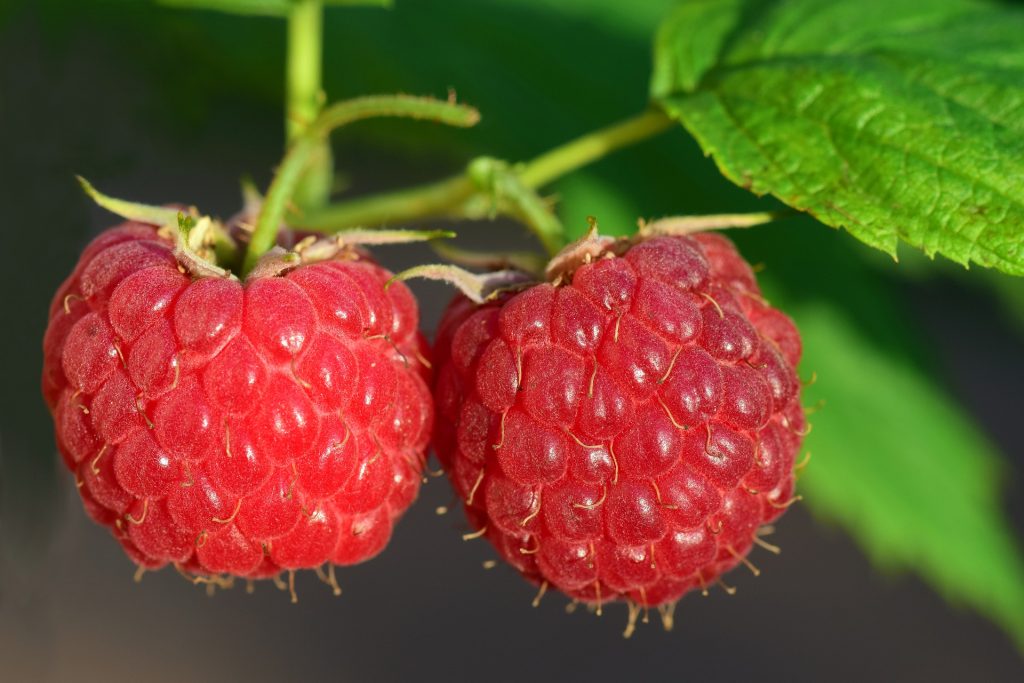 Rubus is a large group of plants from the Rosaceae or rose family. Plants in this group include loganberries, blackberries, raspberries and other brambles. Species of Rubus are established worldwide with a high concentration of species in northern temperate zones, particularly Europe. There are for example over 100 known species in Europe and these are grown ornamentally or for their fruit. However, the leaves of Rubus species of plants may have medicinal properties and have been used traditionally for this reasons. Some species of Rubus such as Rubus idaeus (red raspberry) have been used as antispasmodic agent, and in this regard can be administered as an infusion, and possess an aroma and taste similar to black tea. Nicholas Culpeper recommended raspberry as a treatment for ulcers, sores of the mouth, tuberculosis and kidney stones. Raspberry is also used to treat diarrhoea, nausea and vomiting. Infusions of raspberry leaves have also been suggested to relieve labour pains during childbirth.
Rubus is a large group of plants from the Rosaceae or rose family. Plants in this group include loganberries, blackberries, raspberries and other brambles. Species of Rubus are established worldwide with a high concentration of species in northern temperate zones, particularly Europe. There are for example over 100 known species in Europe and these are grown ornamentally or for their fruit. However, the leaves of Rubus species of plants may have medicinal properties and have been used traditionally for this reasons. Some species of Rubus such as Rubus idaeus (red raspberry) have been used as antispasmodic agent, and in this regard can be administered as an infusion, and possess an aroma and taste similar to black tea. Nicholas Culpeper recommended raspberry as a treatment for ulcers, sores of the mouth, tuberculosis and kidney stones. Raspberry is also used to treat diarrhoea, nausea and vomiting. Infusions of raspberry leaves have also been suggested to relieve labour pains during childbirth.

The medicinal effects of rubus species result from the phytochemistry of the plants. Rubus idaeus (red raspberry) has been shown to be high in the phenolic acid ellagic acid and gallic acid. Other constituents in the leaves include tannins, succinic acid and unsaturated organic acids. Waxes are also present in the leaves and include aliphatic hydrocarbons, fatty acids, primary and secondary alcohols, ketones and wax esters. Associated with these waxes are lipid soluble phytochemicals such as terpenoids including squalene, sterols, tocopherols and amyrins. Rubus species such as Rubus ulmifolius have also been shown to contain volatile components including α-pinene (18.0%), 1,8-cineole (11.8%) and linalool (7.9%) in samples collected in February, and geraniol (18.2%), linalool (17.7%) and limonene (7.7%) in samples collected in June. Rubus species also contain flavonoids such as anthocyanins and phenolic acids. Kaempferol, quercetin, myricetin, astragalin and their glycosides are commonly found in Rubus species of plants. Image is of a red raspberry (Rubus idaeus).
A number of pharmacological studies have been performed on various Rubus species in order to determine medicinal effects. Studies suggest that the medicinal effects from Rubus will depend on the mode of extraction as certain phytochemicals within the plant may not be soluble in all solvents. Infusions in water for example may not be efficient at removing lipid soluble components in the leaves, and this is true for all herbs. The phenolic compounds in Rubus species leaves may confer antimicrobial activity, and likely also confer antioxidant and anti-inflammatory effects. The anthocyanins in the fruits also likely have antimicrobial, antioxidant and anti-inflammatory effects. Quercetin, kaempferol and myricetin have been shown to have central nervous system modulating effects and to affect the benzodiazepine part of the GABA receptor, and this may explain the anxiolytic effects of Rubus species leaf extracts on experimentally induced anxiety on rats and mice.
Eat Well, Stay Healthy, Protect Yourself
RdB
